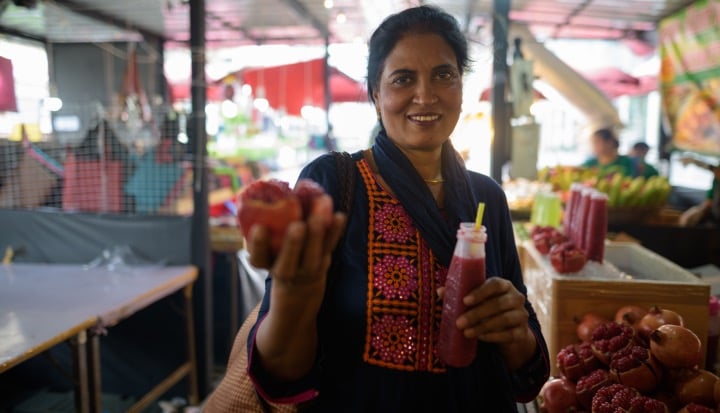Despite its value, evidence-based decision-making may often be overlooked due to its complexity. It requires a lot of thoughtful consideration. For instance, to use evidence effectively, we need to understand the impact of research designs on the quality of the results, recognize potential biases that may lead to over-reliance on a single perspective, and learn how to apply evidence from one context to a different context. This is particularly true for organizations that are designing impactful digital support programs for small businesses, and one of the main reasons why we developed the Strive Community Small Business Evidence Map.
The Evidence Map is the first interactive open tool charting evidence on the impact of digital and data-first interventions on small businesses. It contains more than 100 studies that are quality-assured and synthesized to create a deeper understanding of what really works, for whom, and where. We’ve made the tool public so other small business supporters can engage with the best available research to support their program designs and strategies.
For example, with the recent launch of the Strive Women program—a new initiative from the Mastercard Center for Inclusive Growth and CARE focused on supporting female entrepreneurs—Strive Community used the Evidence Map to explore the impacts of digital and data-first interventions on women-owned small businesses.
From our programs in Southeast Asia, we know that small, women-owned businesses often struggle to adapt to and take advantage of digital opportunities. Take the story of Le Hong Van, owner of Joy VN, a small Vietnamese business specializing in high-quality rice products. During the pandemic, Le Hong struggled to adopt e-commerce due to her focus on quality over price, which was difficult to express online. Instead of making compromises on price, she completed e-commerce and digital marketing courses provided by Strive Community’s partner WISE. Using what she learned, Le Hong transformed her business. She established a sustainable digital presence on the e-commerce platform Shopee and improved the quality of her marketing content; she is now seeing the proportion of revenue generated from e-commerce increase.
Women like Le Hong face unique challenges, opportunities, and experiences as small business owners. Understanding these differences is crucial to creating an inclusive and supportive environment that empowers them to thrive as small business owners. Our analysis of the Evidence Map shows three main takeaways on how best to support women:
- Women-owned small businesses are digitalizing, but they have distinct needs and barriers. To capitalize on the momentum for digitalization, women need additional support to adopt more complex tools and platforms—including information management systems, digital lending products, and e-commerce platforms—which are linked to improved efficiency, resilience, and revenue growth for women-owned small businesses.
- Take a bundled approach to drive impact. Siloed solutions lead to limited, short-term changes in capacities and practices. Digital support programs should consider how to bundle their efforts to find the right combination of support for the needs and capacities of their small business audience.
- Digital programs and services that are not gender-intentional can exacerbate existing gender gaps. Gender-neutral programming is not enough to close the gaps in digital product and tool adoption, nor the benefits that come from digital for small businesses. CARE and Mastercard’s Ignite Program has shown that programs working directly with financial and non-financial service providers can have positive results: by the program’s midline, an average of 58% of women reported higher resilience, and 81% reported higher sales across three countries.
Strive Women has been designed with these considerations drawn from the Small Business Evidence Map by ensuring that interventions are gender-intentional and take a bundled approach to provide holistic solutions for women-owned businesses.
We invite you to explore the Evidence Map for yourself. You can scan for evidence on specific interventions in regions of interest that deploy various methodologies, and filter for a more precise understanding of the impact of digital interventions on different outcomes for small businesses. If you have questions on the Evidence Map, are interested in discussing research priorities, or know of relevant digital support for small business impact studies, please contact he***@st*************.org.










